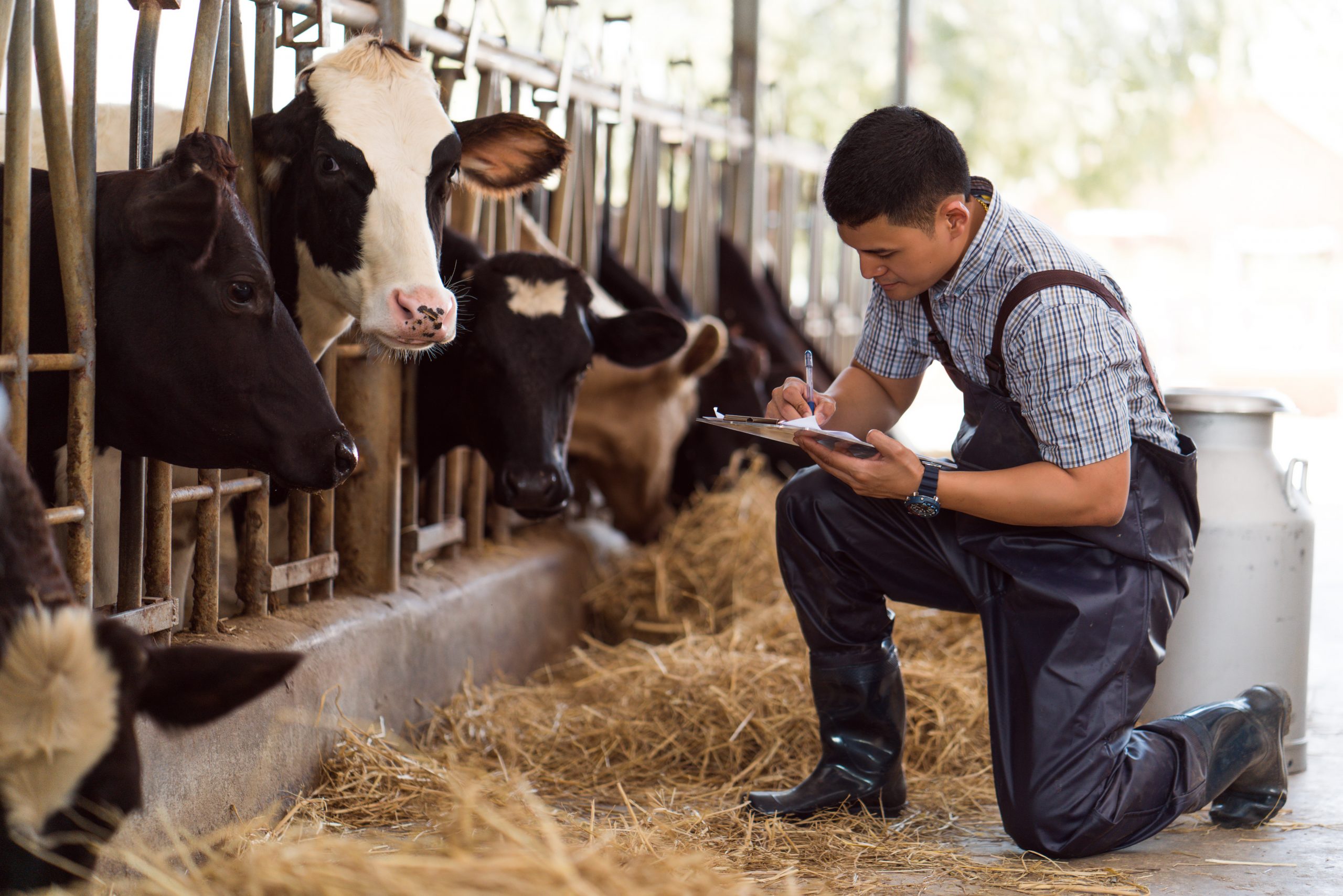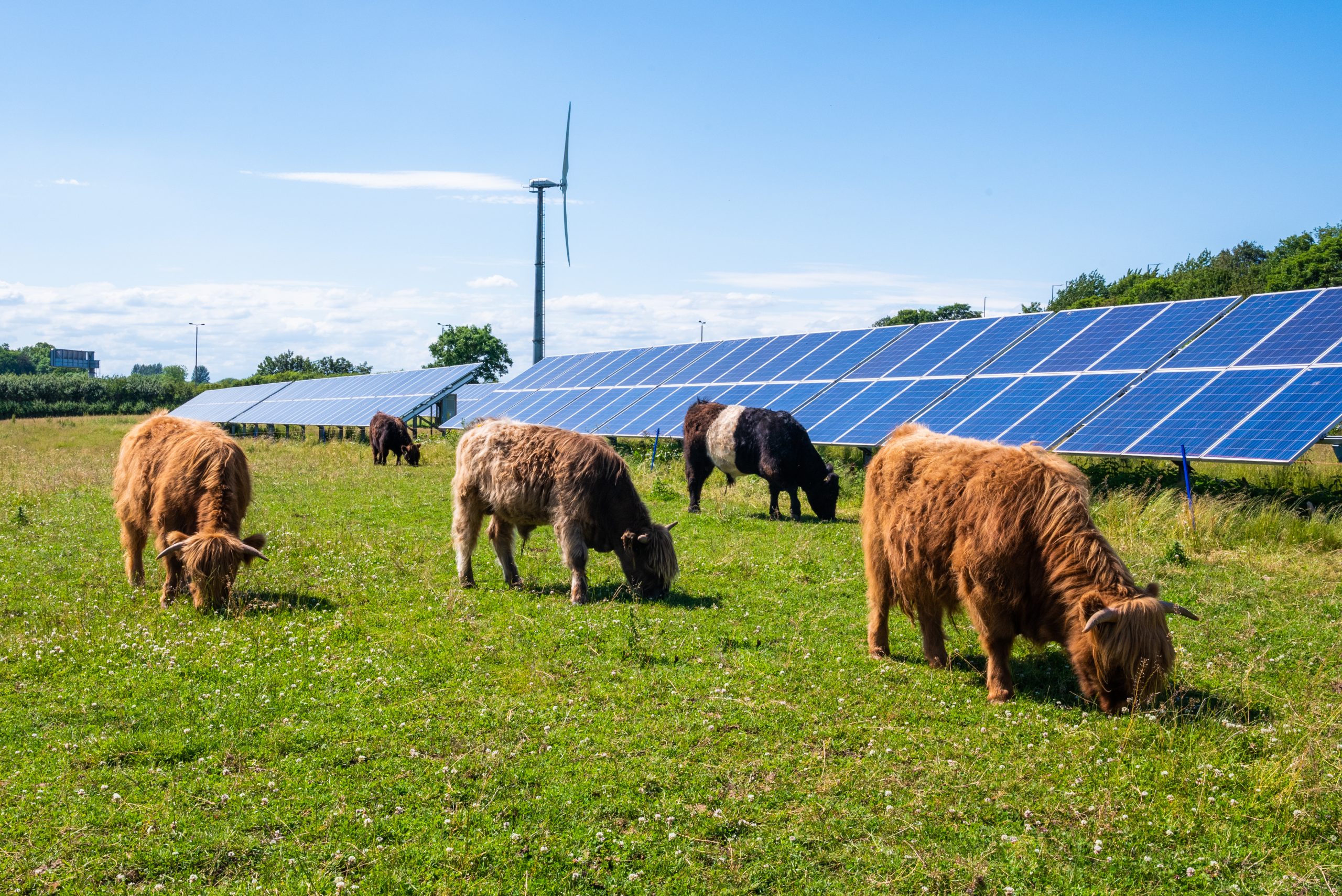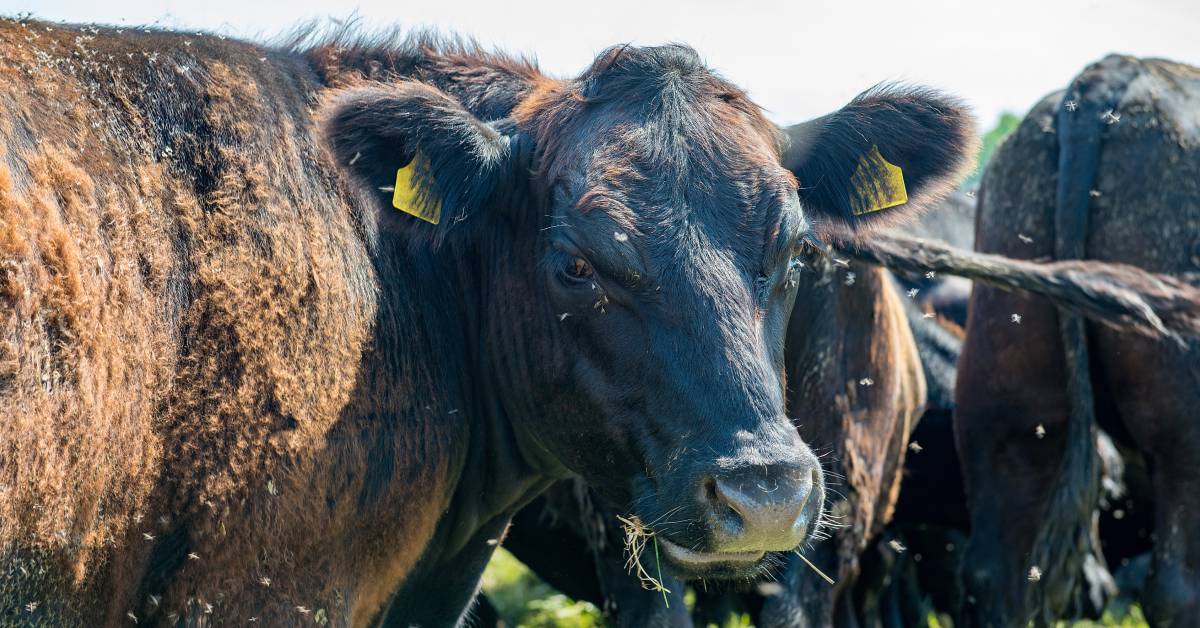Ranching is a world itself, where wide-open spaces meet hard work, and the bond between a rancher and the land runs deep. Whether you’re a seasoned rancher looking to refine your skills or someone dreaming of starting their own ranching journey, this guide is your gateway to success.
From managing livestock to optimizing land use and fostering a sustainable environment, this blog will equip you with the knowledge and insights needed to overcome the challenges and embrace the rewards of life in the process of how to become a rancher.
So saddle up, as this blog post outlines 10 key tips on how to become a rancher.
1. Know Your Niche: Choosing Your Livestock and Market
A ranching venture begins with a crucial first step: knowing your niche. This involves a thoughtful exploration of your interests and a keen understanding of the compatibility between your land and the chosen livestock.
Before making a final decision on whether to go for poultry crowdings, beef cattle, baby cattle, sheep, goats, or others, take the time to explore your options and the specific characteristics of your land. Integrating livestock record-keeping into your decision-making process can help you assess market demand and minimize potential losses from different livestock options.
Understanding the economic landscape will not only guide your selection but also help you tailor your ranching approach to meet consumer needs. Investigate trends, consumer preferences, and emerging opportunities within the livestock market to align your choices with the demands of the industry.
Climatic conditions, available resources, and necessary infrastructure are vital factors to consider when establishing the animals one chooses. Compare your land’s potential to meet the specific needs of your livestock, and be aware of how broiling may affect their health and productivity.
Effective resource management and infrastructure planning, which are factors for success of the whole way, are the essential elements that push the grower’s win.
2. Invest in Quality Breeding Stock
A major factor in a cattle ranch’s success is the quality of its breeding stock. With livestock, the best genetics are like the good old adage “You get what you pay for,” which emphasizes the importance of investing in elite genes.
The health, productivity, and eventual success of your ranch depend on the careful selection of breeding animals that have the desirable traits and capability of the offspring. Genes that are fully intact and completely free from the pathogenic influence of environments ensure such animals live longer lives with little or no health impairments.
A breeding selection process aimed at picking healthy breeding stock of the year offers a possible option for preventing the occurrence of the most common diseases and ensuring the good health of your herd.
Combined, better genetics will certainly enhance livestock production. The rate of growth is significantly increased, milk production is remarkable, and overall performance is greatly improved.
Consideration of offspring quality is equally crucial. Quality breeding stock contributes to your ranch’s genetic legacy, producing offspring that carry forward desirable traits. This not only maintains but elevates the overall quality of your herd over successive generations.
While on their journey to becoming ranchers, ranchers choose either natural breeding or artificial insemination as their breeding methods. Ranchers who are equipped with knowledge of the advantages and disadvantages of each method can make their own decisions based on the particular needs and objectives of their ranch.
Unlike natural breeding, which relies on animal instinct, artificial insemination offers a more controlled method and the opportunity to utilize a superior sire’s genetic material. Moreover, herd selection and culling also play a pivotal role in maintaining and enhancing genetic quality.
Regularly assess the performance of your animals, identifying those that consistently exhibit desired traits. Simultaneously, be prepared to cull individuals who may pose health risks or fail to contribute positively to the overall genetic makeup of the herd.
3. Master Animal Husbandry: Essential Care Practices
Proper nutrition is the cornerstone of animal husbandry. Implementing a well-balanced and nutritionally sound diet is vital for the overall health and productivity of your livestock. Explore feeding strategies such as grazing, hay, and supplements to meet your animals’ specific dietary needs.
Animal health practices are equally essential for a successful ranch. Tailoring nutrition, depending on the life stage and needs of your livestock, will guarantee good growth, reproduction, and performance. Implement a comprehensive health management plan comprising vaccinations, parasitic control, and disease management.
Frequent vaccinations will protect your herd against diseases that could have been averted, while timely control of parasites assures good health and productivity. Be vigilant in disease management and handle any health problem in the herd immediately to avoid the spread of diseases.
Animal care is not only focused on their basic necessities but also includes hygiene and environmental quality. Adjust the proper shelters, water supply, and well-kept facilities to ensure that the livestock is comfortable and wellness is maintained.
4. Manage Your Land Wisely: Sustainable Grazing Practices
Land maintenance is the most significant part of the ranching business. Hence, the deployment of sustainable grazing methods should be the main tool in determining its success. Grazing animals on the basis of rotation is one of the key elements in connection with sustainable herding.
During a grazing season, divide pasture areas into smaller paddocks and gradually shift livestock through them to enhance the grass for maximum growth and reduce overgrazing. Compared with uninterrupted grazing, such a rotational grazing system ensures that pastures achieve more forage consumption.
Moreover, the resting period ensures their regeneration, which consequently leads to increased productivity and biodiversity. The benefits extend beyond pasture health, positively impacting the overall well-being of your animals.
Additionally, soil health is another critical consideration in sustainable grazing practices. Healthy soils provide proper moisture and all the nutrients required for the proper growth of grazing, as well as the cycling of nutrients, factors that increase the nutritional quality of forage.
Strategies to harvest the pasture in a controlled manner are employed to avoid overgrazing, e.g., monitoring stocking rates and adjusting grazing periods to reduce soil degradation. Encourage the application of sustainable practices that strengthen topsoil structure, water-holding capability, and soil fertility.
5. Build a Strong Support System: Mentorship and Networking
A mentorship relationship to learn from experienced ranchers is the key to success for those who wonder how to become a rancher. Mentors can offer guides about animal husbandry and business management. This will benefit the ranch by leading to faster learning and making the right strategic decisions.
Networking and making friends with other large ranchers and top industry professionals not only creates allies but also widens the circle of your mentors. The possibility of establishing a network of people belonging to the cattle ranching community increases your access to shared experiences, collaborative problem solving, and a wellspring of knowledge, all this in one place.
Working together with colleagues lets you stay updated with the latest market trends, exchange opinions, and provide opportunities for cooperation that have and can benefit both sides. Additionally, organizations in the industry provide major funds and supply these resources to ranches.
Joining a wide group of professionals would result in exposure to similar educational opportunities, seminars, and professional meetings. Such organizations frequently provide tools in the form of publications, research, and expert advice, allowing you to even better understand your situation and enhance your knowledge of current industry best practices.
6. Embrace Continuous Learning: Staying Up-to-Date
Attention to the latest industry trends ensures that you are ahead of the curve and able to respond to changes in the ranching environment. Farmers can use trending technologies, from improving animal health practices to maturing market demands, to gain further understanding of what works for their economy and what doesn’t.
From knowing how to correctly care for animals and updating marketing strategy to having a sustainable plan, being informed is key to sustainable farming. Self-education incorporates upkeep with methods that simultaneously enhance the profitability of your ranch.
Effective methods such as improved grazing management or herd health protocols lessons/refine efforts to build a ranching strategy and enhance sustainability. As you pursue your lifelong learning goal, use different tools to sustain your learning.
These may include workshops, conferences, and industry publications. Workshops and conferences offer practical learning facilitated by networking and the latest schemas. The publishing industry is a notable media resource, and it best spreads information, such as leading research results based on case studies of different industries and thoughtful opinions of experts.
Besides, showing livestock and going to sales is another way to learn deeper, more specifically, what is relevant to breeding. They feature hands-on sharing of the newest breeds, bloodlines, and trends in the livestock industry. Acquiring this knowledge can help improve the genetics of your herd, making your breeding more profitable.
7. Diversify Your Income Streams: Yet explore more earning options.
The source of income that comes from selling livestock is the prime revenue earner, but opening up to agritourism opens a new avenue. Allowing visitors to your ranch, for example, educational tours, classes, and recreation.
In addition to creating income, farm-to-table initiatives help strengthen the links between artful crop and livestock goods buyers and producers through direct marketing. Not only do farm-to-table initiatives create new income streams for ranchers, but they also allow family farmers to market produce affordably to nearby customers.
The key to this may be to build rapport with restaurants, farmers, markets, and the like and possibly operate a Community Supported Agriculture (CSA) program to create a bountiful and more profitable connection between your ranch and those who want to enjoy freshly grown, locally sourced produce.
High-value goods or services will always be powerful factors contributing to income increase. Manufacturing and selling more cost-sensitive products, such as high-quality meat, can Marco a market niche and cater to specific customers.
This strategy is based on your ranch features, which make you different from many other producers in the same industry and aid in developing an offer assortment that customers would willingly take. Innovative opportunities also exist in ecosystem services markets and carbon sequestration.
Along with the growing attention given to sustainable actions, some ranchers feed the idea of making money by joining running practices programs that offer money to proper environmentally friendly practices. Such initiatives with carbon sequestration may provide financial benefits to ranches by introducing techniques to build soil health and carbon levels.
8. Be Business Savvy: Financial Management and Record Keeping
Maintaining financial records is the cornerstone of effective financial management. Keep detailed records of income, expenses, and other financial transactions to gain a clear understanding of your ranch’s economic health.
Assess your financial statements regularly to track profitability, identify trends, and make informed decisions that contribute to your ranch’s long-term sustainability. Moreover, it analyzes the costs associated with livestock production, including feed, veterinary care, and infrastructure maintenance.
You must review your expenses regularly, explore opportunities to reduce overhead costs and seek efficiency improvements. Implementing sustainable practices benefits the environment and can result in long-term cost savings.
Explore potential government grants or loans available for ranchers. Governments often provide financial support to promote sustainable agriculture, improve infrastructure, or enhance livestock management practices.
9. Embrace Technology: Tools and Resources for Efficiency
Precision agriculture is a transformative concept that harnesses technology to enhance efficiency in various aspects of ranching. Precision fencing, for example, allows for controlled grazing patterns, optimizing pasture utilization and preventing overgrazing.
Monitoring systems, equipped with sensors and tracking devices, provide real-time data on the health, location, and behavior of livestock, facilitating informed decision-making for improved herd management.
Drones have emerged as powerful tools in ranching operations. These unmanned aerial vehicles can be used for aerial surveys, monitoring large areas of pasture, and assessing the condition of livestock. Drones enable ranchers to gather valuable data efficiently, contributing to better decision-making and resource allocation.
Data analysis software is another key component of ranchers’ technological toolkit. Analyzing data collected from monitoring systems, drones, and other sources allows for a deeper understanding of trends, patterns, and potential areas for improvement. Data-driven insights empower ranchers to make informed decisions, optimize breeding programs, and enhance overall operational efficiency.
Digital tools, such as mobile applications and online platforms, provide convenient ways to manage ranching tasks, from record-keeping to communication with suppliers and buyers. These tools streamline administrative processes, saving time and allowing ranchers to focus on core aspects of their operations.
10. Prepare for the Unexpected: Risk Management and Planning
Unpredictable events such as weather disasters or disease outbreaks can significantly impact a ranch’s operations. Planning for these contingencies involves assessing potential risks and developing strategies to mitigate their impact.
This includes creating emergency response plans, establishing protocols for disease prevention and control, and ensuring the availability of resources for immediate action in times of crisis.
Crop insurance and livestock insurance are essential tools for managing risks in ranching. These insurance options provide financial protection in the event of adverse weather conditions, disease outbreaks, or other unforeseen circumstances that could lead to crop or livestock losses.
Exploring and selecting the right insurance options tailored to your ranching operation can provide a safety net during challenging times. Additionally, resilience and adaptability are fundamental qualities for success in the ranching profession.
The ability to respond effectively to unexpected challenges, adjust strategies as needed, and implement lessons learned from past experiences contributes to the long-term sustainability of the ranch. Flexibility in operations and an open-minded approach to change are key attributes that help ranchers thrive in the face of uncertainty.
Conclusion
From choosing the right livestock and mastering animal husbandry to leveraging technology and diversifying income streams, each tip contributes to the multifaceted puzzle of running a prosperous ranch.
Remember that each tip contributes to a holistic approach to ranch management. Utilize these insights, adapt them to your specific circumstances, and let Folio3 Agtech guide you toward a prosperous and sustainable ranching venture.
FAQs
How to Become a Rancher?
Prioritize wisely, assemble a strong team, and save strategically for a prosperous ranching venture. Gain insights from seasoned ranchers to streamline your path to success.
What Types of Ranches are Most Profitable?
Ranching beef cattle is widely considered the most profitable and straightforward venture among livestock farming for optimal financial returns.
Where is the Best Place When You are Starting a Ranch?
Montana, Kansas, North Dakota, Texas, and Oklahoma are ideal states to commence a farm or ranch. Despite lacking glamour, farming and ranching remain immensely rewarding and vital professions globally.









